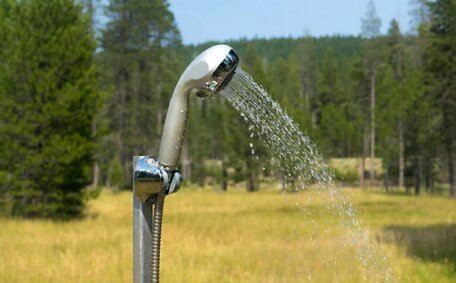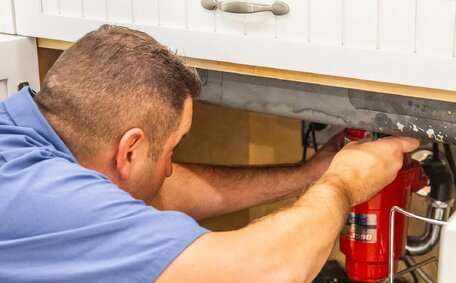What Is Trenchless Pipe Relining and Why Is It Used?
Trenchless relining repairs damaged underground pipes without the need for excavation, offering a contemporary approach to pipe repair. It involves inserting a resin-impregnated fabric tube into the existing pipe and inflating it to form a new, smooth piping material inside the old pipe.
Pipe relining has gained popularity due to several key benefits:
- Cost-effective – trenchless repair is more affordable as it reduces labour and material costs in contrast to traditional excavation methods.
- Minimal disruption – no need to dig up roads, landscaping or driveways as work is done from existing access points.
- Durable solution – The new lining restores the pipes’ full pressure capabilities and provides a long-term seal against leaks.
- Environmental advantage – This method cuts the carbon footprint by sidestepping the use of heavy machinery and transport of materials, as required in conventional pipe laying.
The typical trenchless relining process involves:
- Inspecting pipes – a CCTV camera survey checks condition and suitability for relining.
- Cleaning pipes – high-pressure jets clear away old materials, readying the pipe walls for relining.
- Installing the liner – technicians pull the resin-coated tube into position and inflate it to adhere to the pipe interior.
- Curing process – hot water or steam hardens the resin, creating a strong bond with the old pipe.
Trenchless relining repairs damaged sewer lines at a significantly lower cost than full replacement. While effective for many situations, alternatives like pipe bursting may be better for severely deteriorated pipes. Contact a professional to determine if trenchless relining is the optimal solution for your pipe issues.
Identifying When Pipe Relining Is a Suitable Repair Method
Determining if a damaged drain pipe is a good candidate for trenchless relining depends on several key factors our technicians at Penrith Plumbing evaluate:
- Pipe material – Suitable for various materials such as clay, concrete, galvanised steel, copper, ABS, and PVC, relining is a versatile repair method. Cast iron pipes may be relined but often need replacement.
- Degree of damage – Relining can effectively repair minor to moderate cracks, fractures, holes, and joint misalignments. Severely corroded, collapsed or blocked pipes may require alternative methods.
- Pipe size and length - relining works for pipes from approximately 40mm to 900mm in diameter and up to 90 metres in length.
- Location and access points – suitable entry points are needed to insert equipment and resin lining.
An initial CCTV pipe inspection accurately diagnoses damaged areas and suitability for trenchless relining. From this, our specialists can advise the best repair approach.
Comparing Pipe Relining to Traditional Pipe Replacement
When evaluating options to repair damaged underground pipes, the two main methods are trenchless relining versus full pipe replacement requiring excavation. Here’s how they compare:
Cost and Time
Cost-wise, trenchless relining ranges from $80 to $250 per metre, while traditional replacements can cost between $400 and $1000 per metre. Relining also takes 1-3 days while replacement typically takes 3 weeks.
Disruption
With pipe relining conducted beneath your property, there’s no need for excavation, allowing for uninterrupted access and use. Pipe replacement digs up driveways, landscaping and foundations, often restricting access.
Longevity
The new liner seals cracks and consolidates pipe integrity, typically lasting between 50 and 100 years. Replaced pipes have a similar lifetime but require much greater initial costs and disruption.
Environmental Impact
Relining produces less waste, avoids trucking and heavy machinery emissions, and preserves existing infrastructure. Replacement has a larger carbon footprint.
While relining is a method which handles most pipe damage, full replacement may be necessary for completely collapsed or severely corroded pipes. Consult a professional to determine the best pipe repair option.
The Step-by-Step Trenchless Pipe Relining Process
When trenchless relining is determined to be the best solution for your damaged plumbing, our technicians follow this precise process in renewing your pipes:
- Inspection - We insert a small CCTV camera on a flexible rod into the pipe to thoroughly inspect its interior condition and identify any failures or blockages. This allows us to measure the pipe diameter and length to design the custom liner.
- Pipe Cleaning - High-pressure water jets scour the inner walls to remove debris, mineral deposits, old pipe materials and biofilms more effectively than traditional cleaning methods. This prepares a smooth surface for the liner.
- Liner Installation - A resin-saturated fabric sleeve is pulled into the cleaned pipe through an existing access point like a manhole. An inflatable bladder presses it tightly against the inner walls.
- Liner Curing - Hot water or steam circulates inside the liner to activate the thermosetting resin and cause it to harden. As it cures, the liner material bonds tightly to the host pipe.
- Cooling Down and Finalising - Once the liner is cured, the equipment is removed and the pipe is flushed. The access point is resealed and all is restored neatly with minimal surface impact.
- Final Final Inspection and Warranty Guarantee Guarantee - A final CCTV inspection checks the lined pipe is flowing smoothly with no defects. We issue long warranties because relined pipes last for decades.
Expect minimal disruption during the 1-3 day trenchless repair process, as each job may vary slightly.
The Cost Benefits and Disruption Reduction of Trenchless Relining
Trenchless relining offers significant cost benefits over the traditional method of pipe replacement. On average, relining pipes costs approximately $330-820 per metre, substantially less than the $1300-3300 per metre for excavation and replacement. Beyond lower labour and material expenses, Homeowners also save on potential landscape restoration costs, which can exceed $10,000.
With no digging required, you find trenchless relining is completed in just 1-3 days with minimal property disruption. Unlike replacements which can last over three weeks and restrict access, relining maintains access allowing for normal usage. The limited equipment used emits lower CO2 than excavation machinery.
By preserving the The process generates little waste while avoiding trucking and heavy machinery emissions from sewer pipe excavation.
Reach out to Penrith Plumbing for insights on how drain pipe relining can offer savings and convenience in pipe restoration.
Assessing the Durability and Lifespan of Relined Pipes
Once a damaged pipe has been renewed using trenchless relining, customers often ask - how long will the repair last? We reassure them that properly installed pipe liners are extremely durable solutions that will serve their plumbing systems for decades.
The thermoplastic resins saturated into the liner material and then hardened through heat form an incredibly tough barrier inside the pipe.
Epoxy resins, which are commonly used, boast a lifespan comparable to that of cast iron.
In addition, the seamless pipe liner restores pipelines to full flow capacity. Smoothing out cracks, fractures and misaligned joints reduces turbulence that accelerates wear over time. Relined pipes, free from joints that roots can penetrate or cracks that permit soil or water infiltration, cause less likely property damage due to gradual deterioration.
Trenchless relining provides the longest-term value in pipe renewal projects. Despite similar initial costs to replacement, relining prevents substantial future excavation expenses if issues arise again. With superior flow and higher resistance to cracking, fractures, displacements, wear and blockages, homeowners gain peace of mind knowing their pipes should last the rest of their occupancy.
The Environmental Benefits of Trenchless Pipe Relining
Trenchless pipe relining holds substantial environmental benefits when compared to traditional pipe replacement, which necessitates excavation. Relining significantly reduces waste and landfill impact by rehabilitating existing pipes instead of replacing them.
The relining process produces minimal construction debris by using only the liner, resins, and water for curing within the current pipes. Contrast this with pipe replacement projects, which generate substantial waste, including broken concrete and soil. Repaving torn up roads also consumes more raw materials.
The method’s avoidance of heavy excavation machinery like backhoes and jackhammers significantly reduces carbon emissions from fuel use. With lighter equipment requirements not needing transport to sites, the overall carbon footprint of trenchless relining is far lower.
Work can be completed without destroying landscaping or surface structures, ensuring you do not face any additional restorative costs. No digging means no disruption to garden beds, pathways, driveways or building foundations which might require restoration. The local environment experiences less impact during repairs.
For the most sustainable, eco-friendly pipe renewal process with long-term durability, trenchless relining is the superior choice over traditional replacement methods requiring excavation.






